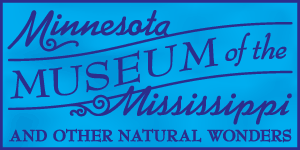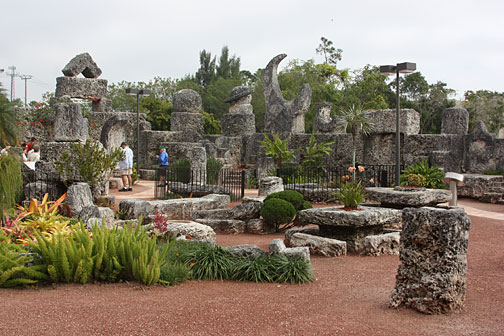
Coral Castle - Homestead, Florida
28655 South Dixie Highway, Homestead, FL

Coral Castle is well known around that world from its frequent appearances on TV shows about unexplained phenomena and believe-it-or-not mysteries. The oft-repeated narrative is that it would have been impossible for Edward Leedskalnin, the 5-foot tall 100-pound creator of Coral Castle, to have placed the enormous blocks of coral rock of the castle into place without paranormal powers.
To be sure, the craftwork and skill evident in the castle walls is impressive, but most of the "mysteries" of Coral Castle were invented after Leedskalnin was dead, as a ploy to increase interest in the commercial tourist attraction.
Edward Leedskalnin was born in Latvia in 1887. At age 26 he was engaged to sixteen-year-old Agnes Scuffs, but on the eve of their wedding, the bride decided the groom was not for her. Heartbroken, Leedskalnin left home. He stopped first in Canada, then drifted to Texas and California, herding cattle and doing odd jobs. Eventually he came to southern Florida, where in 1920 he purchased an acre of scrubland in Florida City, on the edge of the Everglades.
Its unclear what exactly inspired him to start quarrying the rock beneath his land. Southern Florida is underlain with thick beds of porous oolitic limestone which the locals call "coral". In this area the rock is covered by just a few inches of soil, so it was not difficult for Leedskalnin to scrape it away and begin excavating the bedrock. Using homemade tools crafted from auto parts scavenged at the dump, he chipped out squares of rock. He wedged chisels made from Model T leaf springs horizontally under the rock slabs until the brittle rock suddenly cracked along the weak points he'd created. With a block and tackle pulley system, he'd slowly lift one end of the slab, prop it up with stacks of wood, then repeat with the other end, gradually lifting and moving enormous stones all by himself.
Leedskalnin taught himself how to chip and carve the brittle stone into shapes. With much patience, he carved chunky stone chairs and tables. He called his creation "Rock Gate Park". As his skills improved he sculpted even more ambitious monuments: chairs that could rock, monoliths 25 feet tall, tables in distinctive shapes, blocky thrones, stairsteps, sundials, fountains and tall crescent moons and a Saturn-like planet high on a pedestal.
One can only imagine what the local farmers in this remote area thought of their neighbor erecting such stone astrological symbols. Leedskalnin worked alone and at night to escape the tropical Florida heat, but rumors circulated each morning when the sunrise revealed new structures. When asked, he was coy about his building methods, saying only that he understood how to use leverage to his advantage. He explained that he was building a park for his "Sweet Sixteen" who had abandoned him long ago. In a self-published pamphlet from 1936 titled A Book in Every Home, Leedskalnin explains who his "Sweet Sixteen" is, along with his ideals of personal responsibility, marriage, etiquette and citizenship, but its clear that she is more of a metaphor for chastity and innocence than a real person. The somewhat preachy tone of the book seems to belong to a sincere but lonely virgin dismayed by the two-faced betrayals and self-centeredness of modern life. While he no doubt craved the attention of visitors to his garden, he was unwilling to open himself up to sharing his life too closely with anyone.
In about 1936, Leedskalnin decided to buy a larger plot of land 10 miles away in Homestead, Florida. Over the next three years he transported all the stone sculptures to the new Rock Gate Park. Here he continued quarrying coral rock to build a tall wall around his new garden. He built a stone sign and donation box, inscribed mottoes for visitors over the front gate of the garden, and for a back gate built his most impressive creation yet: a three-ton stone balanced perfectly on a hidden truck axle pivot which could be turned by the touch of a finger.
The stone walls of the garden are fitted together precisely without mortar. In the center of the garden, Leedskalnin dug a spiral staircase down to the water table for a well, and rigged up a bucket to lift water to a homemade "bathtub" lined with concrete. He carved stone chairs and beds for his imaginary family of husband, wife and child. In the corner he built a stone barbecue grill, with a homemade pressure cooker made from an auto transmission which could be lowered into the coals to cook a dozen hot dogs at once. He liked to cook them for the children who visited the garden, but its likely Leedskalnin subsisted on a bachelor's diet of hot dogs himself. Ed enjoyed taking visitors on guided tours of the garden, showing off his creations with a rehearsed script and pantomimed actions to demonstrate his innovative outdoor furniture and accessories of the castle.
The final project of the garden was a two-story stone tower. Leedskalnin was finally able to leave his wooden shack and make the castle his home. A tiny upstairs room provided space for a hammock, a food storage box hanging from the ceiling to protect it from ants, and a little kerosene stove and table.
In later years, Leedskalnin spent much time at the library in Homestead, researching electricityand magnetism. In the first floor of the tower he set up a little laboratory for experiments with crystal radios and strung copper wires along the walls to pick up electromagnetic signals. He came to believe that magnetism was the force that united all matter, and published more pamphlets describing his experiments and conclusions which he sold to visitors.
In late 1951, Leedskalnin fell ill. He took the bus to a hospital, where he was diagnosed with stomach cancer. He died a month later. In his absence, the vacant garden was vandalized and ransacked by miscreants looking for the buried treasure that the simple bachelor was rumored to have accumulated. In 1953, a retired jeweler from Chicago purchased the land, restored the garden and opened it as a tourist attraction newly christened "Coral Castle". The garden is well cared for, though Hurricane Andrew in 1992 destroyed many of the lush trees which had once shaded the interior of the castle.
Hours and admissions to Coral Castle
Back to other Art Environments
























